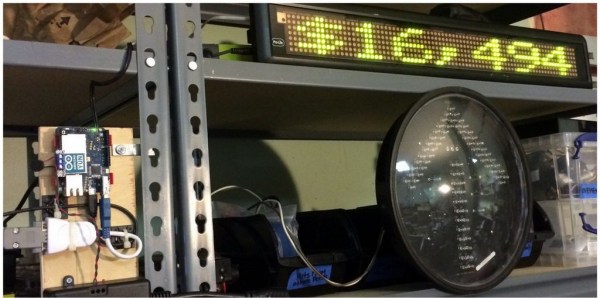In a bout of frustration I recently realized that the roads have all updated — most people have no idea how — and this sometimes hurts the flow of traffic. This realization happened when an unfortunate person stopped in a left turn lane well before the stop line. The vehicle didn’t trigger the sensor, so cycle after cycle went by and the traffic system never gave the left turn lane a green light, thinking the lane was unoccupied. Had the driver known about this the world would have been a better place. The first step in intelligent automation is sensing, and there are a variety of methods used to sense traffic’s flow.
traffic signal3 Articles
Intro To The North American Traffic Signal
Traffic lights are so ubiquitous that we hardly give them a second thought, except to curse their existence when they impede us on our daily drive. But no matter how much it seems like traffic lights have the ability to read our minds and tell when we’re running late, they’re really not much more than a set of lights and a programmable controller. Simple in practice, but as usual, the devil is in the details, and for a system that needs to work as close to 100% of the time as possible, the details are important. Let’s explore the inner workings of traffic signals.
Electromechanical Timing
The traffic lights and crosswalk signals at an intersection are only the public user interface, of course. The interesting stuff is going on in the control box. There’s at least one at every intersection, usually a plain metal cabinet set back from the road, sometimes camouflaged with public bills or graffiti. But inside are the guts of what makes an intersection work and keeps vehicle and foot traffic moving smoothly and safely.
Unsurprisingly, most traffic signal controls started out as purely electromechanical devices. Cabinets were chock full of synchronous motors turning timing wheels with cams to cycle the intersection’s lights through the proper sequence. One old time controller that was common up until recently was made by Econolite, and the insides are a paragon of sturdy design.
Continue reading “Intro To The North American Traffic Signal”
Kickstarter Monitor Will Brighten Your Day
Keeping up with a kickstarter campaign can be quite a task, especially if your project is real (looking at you, Scribble Pen!) and you’re trying to keep up with product fabrication and all the other logistics involved in bringing a product to market. [macetech] are currently in the middle of a campaign themselves and built a loud, bright alert system to notify them of any new kickstarter backers.
The project uses a LED marquee to display the current number of backers, but every time a new backer contributes to the project, a blindingly bright green arrow traffic signal is illuminated and a piezo speaker plays a celebration tune. All of these devices are controlled by an Arduino Yun which, with its built-in Atheros chipset, easily connects to the network and monitors the kickstarter page for changes.
[macetech] used some interesting hardware to get everything to work together. They used a USB-to-RS232 cable with and FTDI chip to drive the LED marquee and a PowerSwitchTail 2 from Adafruit to drive the power-hungry traffic signal. Everything was put together in a presentable way for their workshop and works great! All of the source code is available on their project page, and you can check out their RGB LED Shades kickstarter campaign too.














